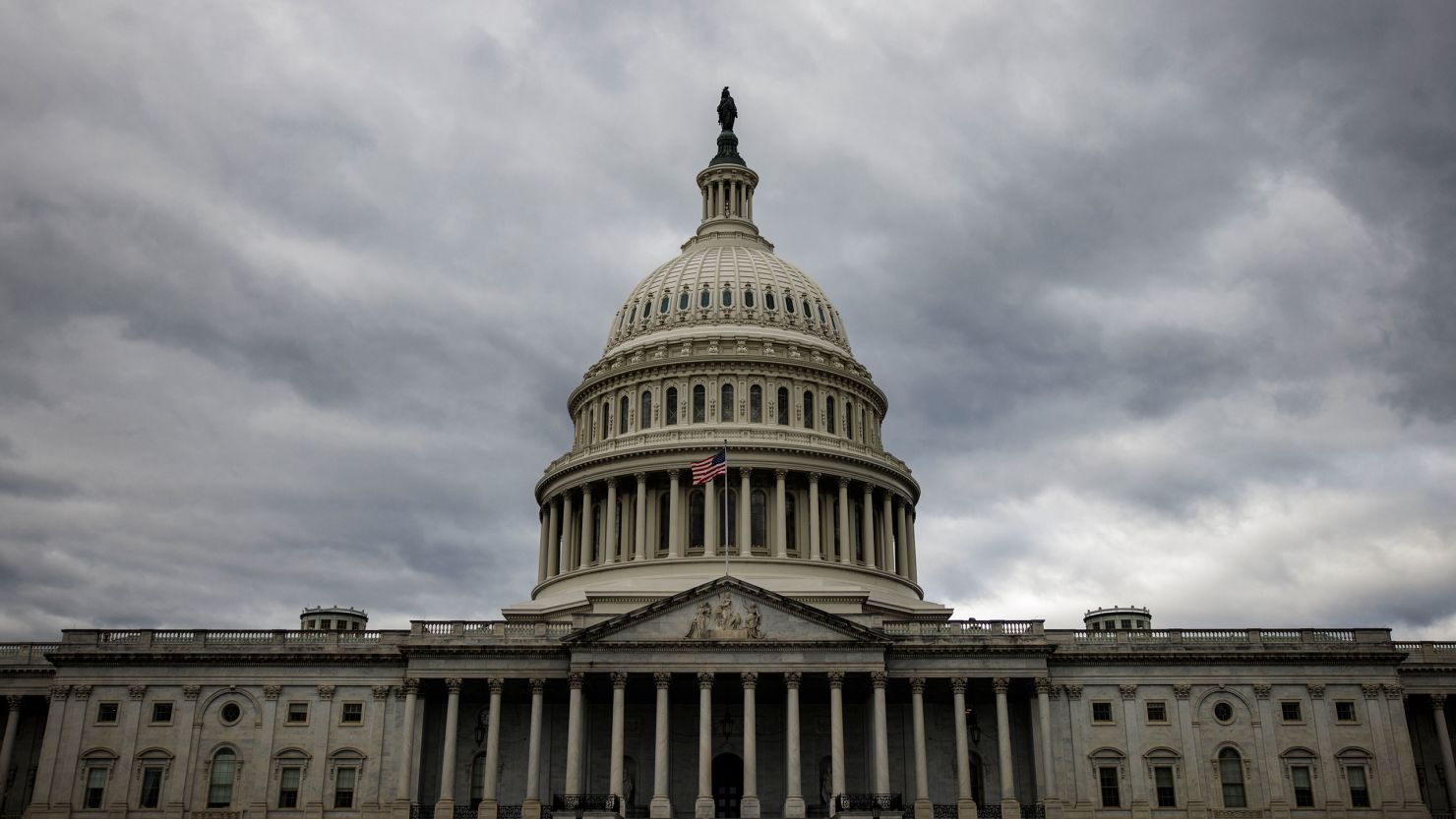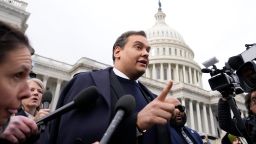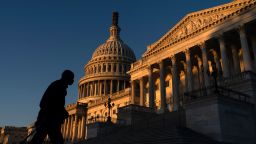It won’t suck up anywhere near the oxygen of the presidential election, but the race for the US House of Representatives may be the most exciting campaign to watch in 2024.
The White House contest looks destined for a rematch that most Americans are dreading. Control of the US Senate will likely come down to whether red-state Democrats can defy the partisan tilt of their states and defend their party’s majority. Republicans need to flip one or two seats – depending on who wins the White House – to control the chamber, and they’re already poised to pick up retiring Democratic Sen. Joe Manchin’s seat in deep-red West Virginia.
But in the House, Republicans’ shrinking majority has underscored the importance of the balance of power in Washington. House Republicans currently control 219 seats to Democrats’ 212, with four vacancies. Recent dysfunction in Congress – from last year’s speakership chaos to stymied border and foreign aid packages – has illustrated the challenges of ruling with a narrow majority.
Democrats need a net gain of five seats to win control of the House – which could shrink to four if they pick up George Santos’ vacant New York seat in Tuesday’s special election. Santos was expelled from the House last year, but he’s not absent from the race. Democrats are using the disgraced former lawmaker in their advertising to try to attack the GOP nominee for the open seat. The outcome of that special election, in a suburban district that President Joe Biden would have carried in 2020, will be closely watched for clues about how this fall’s elections could shake out – especially in the all-important Empire State.
Why New York and California are the hot spots
New York and California will be the epicenter of the 2024 House campaign, with both states collectively hosting the biggest concentration of GOP lawmakers sitting in districts that Biden would have won in 2020. (Congressional maps changed after the 2020 census, so the district lines in 2022 were not necessarily the same as they were when Biden last ran.) These so-called crossover districts – held by the opposite party from the presidential nominee who last won the district – are the low hanging fruit for both sides.
“California and New York are critical to holding and keeping a larger majority,” said one national GOP strategist. “I feel good because those states have some of our best candidates.”
Democrats agree that the two states are key – except for them, they’re the keys to flipping the House.
Both parties also agree that this year’s House battlefield is relatively small – only a fraction of the nation’s 435 districts are likely to see competitive races. That’s in part because in an era of increasingly nationalized politics (and some gerrymandered districts), there aren’t that many crossover districts. Excluding Santos, there are 22 House members sitting in these seats: 17 Republicans (read: Democratic offensive targets) and only five Democrats (read: Republican targets).
“I would say that people should be concerned,” Republican strategist Cam Savage said of his party’s prospects of holding its narrow majority. “One thing first and foremost: We are in a highly polarized time. It makes ticket-splitting incredibly difficult. Probably harder now than any time in our history.”
Underscoring the importance of these two coastal states, House Majority PAC – the super PAC tied to House Democratic leadership – announced early last year that it’d be investing $45 million in New York and $35 million in California. Likewise, its Republican counterpart, Congressional Leadership Fund, launched a Blue States Project last year, declaring, “The House will be won or lost in Blue States.”
Inside Elections with Nathan L. Gonzales rates 12 House seats as Toss-ups, and half of those are in either New York or California. But there are enough other seats across the country – in states like Michigan, New Mexico, Colorado, Washington and North Carolina – that could make a difference to the House majority, too.
Seats Democrats are targeting
Of those 17 Republicans sitting in Biden districts, five of them are New York freshmen: Reps. Nick LaLota, Anthony D’Esposito, Mike Lawler, Marc Molinaro and Brandon Williams.
Another five are in California: Reps. John Duarte, David Valadao, Mike Garcia, Young Kim and Michelle Steel.
Two are in Arizona: Reps. David Schweikert and Juan Ciscomani.
Reps. Don Bacon of Nebraska, Tom Kean of New Jersey, Lori Chavez-DeRemer of Oregon, Brian Fitzpatrick of Pennsylvania and Jen Kiggans of Virginia round out the list.
The Democratic Congressional Campaign Committee recently released its initial list of 17 “Red to Blue” candidates and there’s strong overlap with those crossover districts. Inclusion on this list often comes with fundraising and operational help from the DCCC, and it signals to donors who the party considers its top recruits.
Four of the DCCC’s Red to Blue challengers are in California; three are in New York, including former Rep. Tom Suozzi, the party’s nominee in the special election to succeed Santos; two are in Iowa; and there’s one each in Arizona, Colorado, Montana, Nebraska, Oregon, Texas and Virginia. One Red to Blue candidate is running for an open Michigan seat that Democrats are defending.
The DCCC’s target list – which is a more expansive list of about 35 seats it’s hoping to put in play – includes additional districts in Arizona, California, Florida, Michigan, Pennsylvania and Wisconsin. A target list doesn’t necessarily mean those seats will see major investment – those decisions about where to run advertising, for example, typically come later in the year.
Seats Republicans are targeting
The House GOP campaign arm releases a similar target list, which includes 37 offensive seats this year. That’s much smaller than the 70 seats the National Republican Congressional Committee was targeting in the previous cycle – a reflection of the gains the GOP has already made in blue states and the smaller number of crossover districts for the party to go after this year.
The first tier of Republican targets are those five Democrats representing districts that backed Donald Trump. They are spread out around the country and include a mix of freshman and veteran lawmakers.
The freshmen are Reps. Mary Peltola of Alaska and Marie Gluesenkamp Perez of Washington. Rep. Jared Golden of Maine is a three-term member. Reps. Matt Cartwright of Pennsylvania and Marcy Kaptur of Ohio have served for longer stints, with Kaptur last year becoming the longest-serving woman in Congress.
Republicans are also targeting seats Biden would have won in 2020 but where Democratic incumbents are not running for reelection. Retirements often present an opportunity for the opposing party because it removes the advantage of incumbency.
That’s especially true in two seats in Michigan that the GOP has its sights on. Democratic Rep. Elissa Slotkin – a powerhouse fundraiser – is running for Senate instead of seeking reelection to the 7th Congressional District, which Biden would have won by less than a point.
And in Michigan’s 8th District, which Biden would have won by 2 points, longtime Rep. Dan Kildee is retiring after a cancer diagnosis. The district had already been redrawn to be more favorable to the GOP ahead of the 2022 elections, but without Kildee – who was first elected in 2012 – on the ballot, Republicans don’t have to go up against a prominent lawmaker from a well-known political family. His uncle, Dale Kildee, served in Congress for more than three decades.
And in a Virginia seat that became more Democratic after redistricting, Republicans are now more optimistic about contesting the 7th District without Democrat Abigail Spanberger in the race. The congresswoman opted against reelection this year to focus on her 2025 run for governor.
An additional crop of seats Republicans will try to peel away are those held by Democrats that Biden would have won by narrow margins. For example, he would have won Pennsylvania’s 7th District, represented by Rep. Susan Wild, by less than half a point; Ohio’s 13th District, represented by Rep. Emilia Sykes, by about 3 points; and Colorado’s 8th District, represented by Rep. Yadira Caraveo, by less than 5 points.
Primaries can be crucial
This spring kicks off primary season for down-ballot races, with the first congressional primaries happening on March 5 – also Super Tuesday for the presidential race. California, North Carolina and Texas are among the first states with competitive House races to hold those nominating contests.
Both parties have an interest in getting the strongest general election candidates through primaries, but among competing forces and outside groups, there’s not always agreement on who that would be. Primaries, in general, present a frequent political conundrum – candidates favored by the party base aren’t always best positioned to pivot to the general electorate in the fall.
Where redistricting matters
Redistricting was a big deal in 2022 because it was the first congressional election after the reapportionment process that followed the 2020 census. But redistricting is still a factor in this year’s election, in part because of legal challenges that have resulted in new maps – or soon will. When district lines change dramatically, the partisan makeup of the seat often changes too – and that has a direct effect on which districts are targeted by the opposing party. In North Carolina, for example, the GOP-controlled state legislature came up with a new map that is expected to yield Republicans at least three seats this year.
But in New York, the state Supreme Court may have helped House Democrats in their effort to regain the majority with a December ruling ordering the state to redraw its congressional map. New York’s bipartisan Independent Redistricting Commission has a February 28 deadline to create the new district lines, over which the Democratic-controlled state legislature would have ultimate say.
In Alabama, Democrats are likely to pick up a seat after a three-judge federal panel approved a map that creates a second congressional district with a substantial Black population. It’s a similar story in Louisiana, where the creation of a second Black-majority district gives Democrats an opportunity to pick up another seat. There’s an ongoing federal case challenging Georgia’s redrawn congressional map, which maintains the GOP’s advantage. There’s also pending litigation in several other states, including in Florida over a map pushed by GOP Gov. Ron DeSantis that critics say dilutes Black voting power, and in South Carolina, where a Charleston-area seat that used to be more competitive is the subject of a case heard before the US Supreme Court.
Uncertainty of the presidential race
The uncertainty that looms over all these races is the presidential contest – and what it will look like as the campaign moves into the general election. Both parties argue that presidential-year turnout will help their congressional candidates, but a White House race also makes it harder for those candidates to distinguish themselves from unpopular party standard-bearers, whether it be Biden for Democrats or Trump, the likely GOP nominee.
“If your strategy is to outrun your presidential candidate, it is incredibly difficult to do that,” said Savage, the GOP strategist, noting that it takes a unique brand that transcends party politics.
The fact that blue states like New York and California are such a big part of this year’s battlefield would suggest tough headwinds for congressional Republicans running in Biden districts. But in California, especially, some of those vulnerable Republicans have successfully run before with Trump at the top of the ticket. New York is more untested terrain given that the vulnerable GOP incumbents there are freshmen. That’s one reason this month’s special election for the Santos seat will be so closely watched. Still, not all suburbs are created equal – as CNN senior political analyst Ron Brownstein has noted, the Long Island suburbs have been friendlier to Trump than others around the country.
And some vulnerable Republicans are already lining up behind Trump, who faces 91 criminal charges across four separate cases but has remained the dominant front-runner in the GOP presidential primary and enjoys a narrow advantage over Biden in some national and swing-state polling of a hypothetical general election. Biden’s low approval numbers are encouraging Republicans that he’ll be a drag on Democratic candidates. Notably, Suozzi – the Democrat running to succeed Santos in a seat Biden would have carried by 8 points – said he didn’t think it would be “helpful” for the president to campaign with him in the special election as Republicans hit him over immigration.
As the general election dawns, some Democrats also caution against congressional candidates running against Trump entirely – noting that was a mistake the party made in some places in 2016.
“The charge of the down-ballot candidates is to communicate their own strong contrast and not be relying on what’s happening above them,” said Democratic strategist Achim Bergmann.
“The most important thing for the Democrats to do is to make the contrast more specific and more individual to them,” added Bergmann, who said trying to link GOP opponents to Trump isn’t always effective – especially in districts where moderate Republicans and independents might already be casting their anti-Trump vote at the top of the ballot but looking for a check on that vote at the congressional level.
Regardless of what the White House matchup looks like, Republicans believe they found a winning strategy in these blue states in 2022, when they ran against state Democratic leaders, especially on crime. Without presidential advertising crowding the airwaves in those states, they argue it’ll be easier to tie Democratic congressional candidates to California Gov. Gavin Newsom, New York Gov. Kathy Hochul and New York City Mayor Eric Adams. But without those leaders on the ballot, Democrats aren’t buying the argument that they’ll be effective boogeymen.
Democrats are also optimistic that abortion rights – which have been a motivating issue for voters in recent off-year elections and ballot initiatives, even in red states – will help their candidates. Republicans widely acknowledge that their party didn’t talk about the issue effectively in the 2022 midterms in the wake of the Supreme Court overturning Roe v. Wade. “Stating their position more clearly needs to be a priority – that’s one of the biggest takeaways” from 2022, said the national GOP strategist.
Even if abortion wasn’t as salient an issue in some 2022 races in New York or California, where blue-state governments may have made any threat to reproductive rights seem less pressing, Democrats are highlighting the national and local stakes this year.
“The threat of a national abortion ban has only become more believable – and it’s literally on the ballot in New York,” said Democratic strategist Meredith Kelly, a former communications director for the DCCC.









